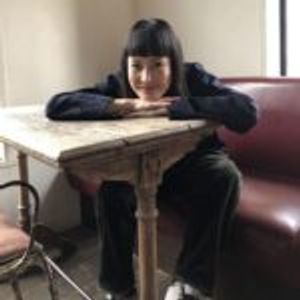B BOY sculptor Taku Obata is attracting worldwide attention for his large-scale B BOY sculpture. The sculpture has been exhibited so far in Yamagata prefecture, Singapore, and New York, and had been stored there until it finally made its way back from overseas. Titled “B BOY REVENGE 2022,” the sculpture appeared for the first time in ten years at the gallery PERCEL in Nihonbashi Bakurocho, Tokyo.
The B BOY poses in the center of the gallery. It is a wooden sculpture that captures the momentary stillness of a dancer in motion, and is perfectly beautiful from any 360-degree angle.
As someone who is familiar with breakdance and hip-hop dance, Taku Obata expresses his love for breakdance by interpreting the bodily movements acquired through dance from a new perspective and translating them into art forms such as sculpture, drawing, and painting. I don’t believe there is any other artist in the world who has pulled this off. What is the perspective of Taku Obata, who is a real B BOY, sculptor, and artist……? We took a closer look at his thoughts behind his pieces through his exhibition.
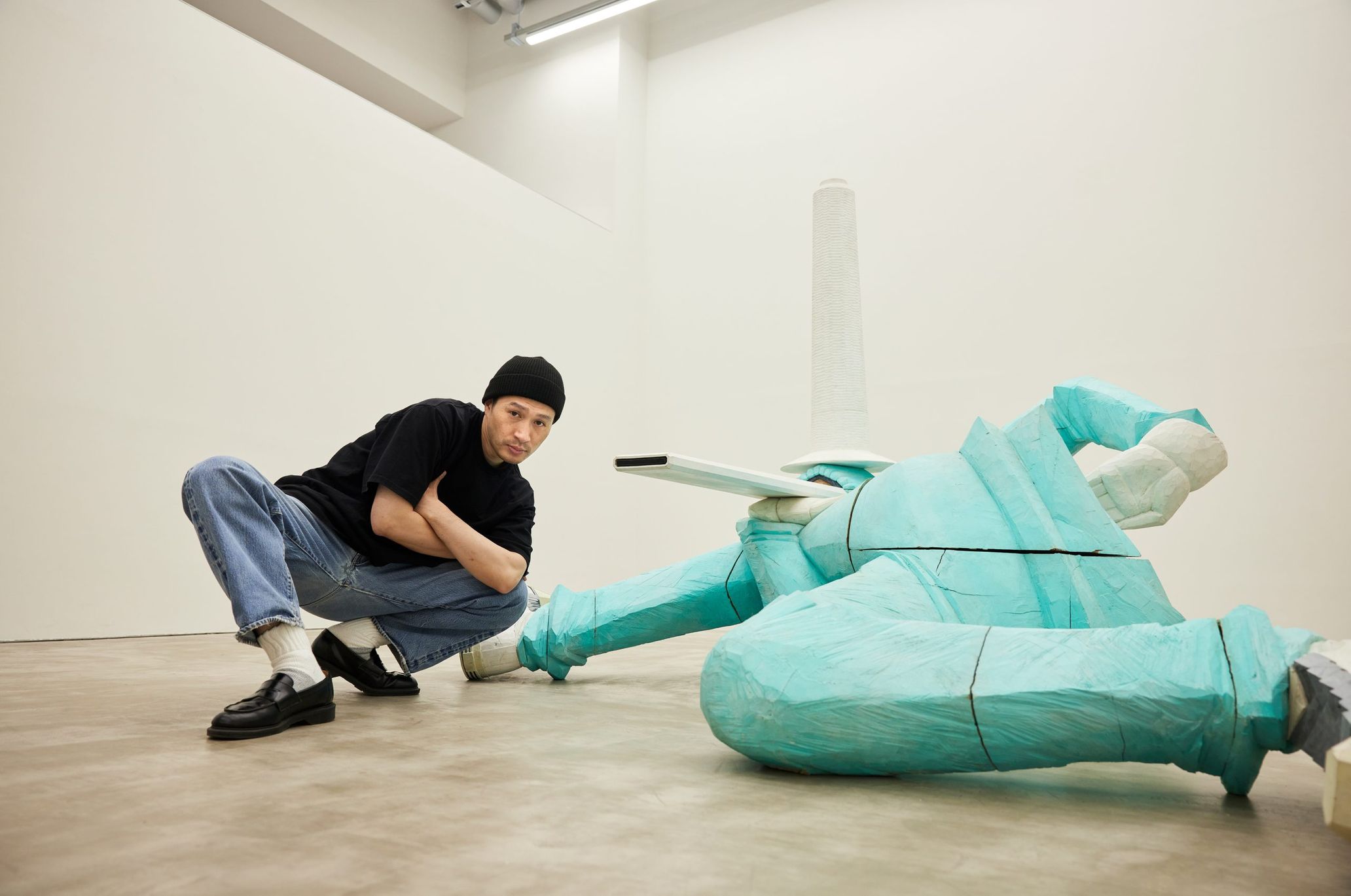
Taku OBATA
B BOY sculptor and breakdancer. Born in 1980 in Saitama prefecture. Formed UNITYSELECTIONS, a hip-hop unit centered around breakdancing, in 1999. He received a B.F.A. in sculpture in 2006 and an M.F.A in sculpture in 2008 from the Tokyo University of the Arts. Although he works around the wooden B BOY sculpture as his centerpiece, Obata also works in other mediums such as drawing, painting, printing, and other two-dimensional art. Since 2009, he has held solo exhibitions and has participated in group exhibitions in Japan and abroad. His works have been exhibited in Japan, London, Paris, New York, Singapore, Hong Kong, and South Korea. His works that translate B BOY identity into contemporary art have received critical acclaim around the world.
Instagram:@takuobata
Twitter:@takuspefad
The wooden sculpture shaped by the golden ratio
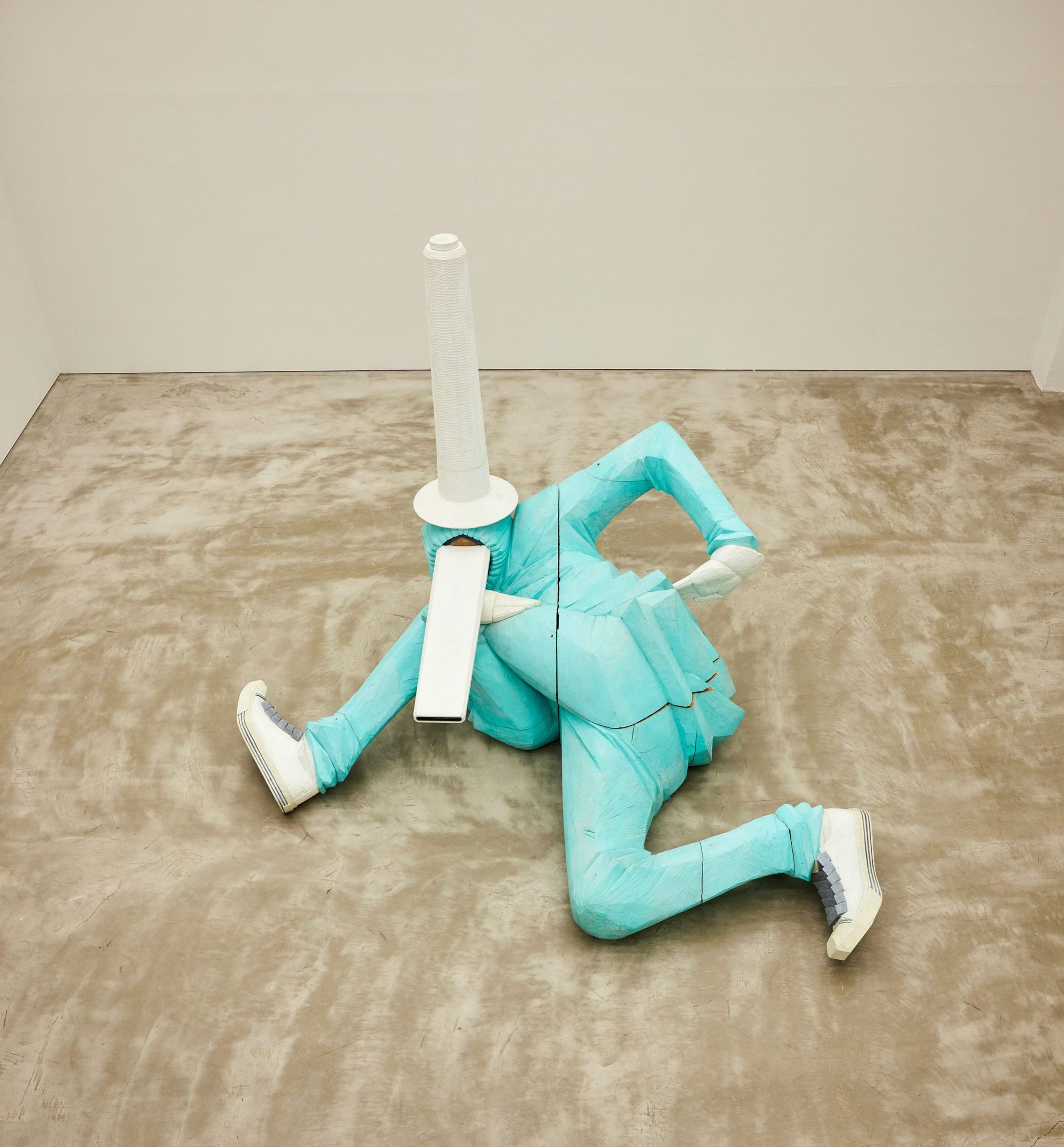
——First, I’d like to ask you how the title “B BOY REVENGE 2022” came about.
Taku Obata(Obata): I took it from “Breaker’s Revenge” by Arthur Baker, a song in the movie Beat Street. It also signifies the work that I had exhibited previously coming back and being able to share it here one more time. This work was exhibited at the Keith Haring Museum in Yamanashi for my solo exhibit (“Taku Obata: B BOY on Sky Court”) ten years ago.
The exhibition was held at the Sky Court at the Museum, which is a very relaxing rooftop area. Because the exhibition was on for a long two-month period during the summer season, there were concerns of typhoons and intense wind and temperature shifts. To combat that, I created a sleeping sculpture instead of the standing one, which could have been hazardous. I always wanted to recreate it in this new pose and into a size that would fit the new space it would occupy. That’s how it got to be this big.
——What is this pose called in breakdancing?
Obata: A freeze. It’s a pose that breakdancers like CHINO, CRAZY LEGS and other B BOYS do often. I thought this pose was interesting from a sculptural point of view and from the point of view of the human body… that’s what led me to make this.
If you look closely, you can see that the toes of one foot are on the ground and the heel is floating, but the heel is on the ground on the other. Anatomically speaking, the arms are facing the opposite ways. I wanted them to be as physically altered as possible.
The feet are also locked in a right angle. B BOYS often lock their feet this way when they freeze, but it’s very hard to stay conscious of that. Also, if you connect the tip of the hat, the tip of the glasses, and the tip of the knees with a line, they all form a triangle. I try to make that kind of golden ratio visible.
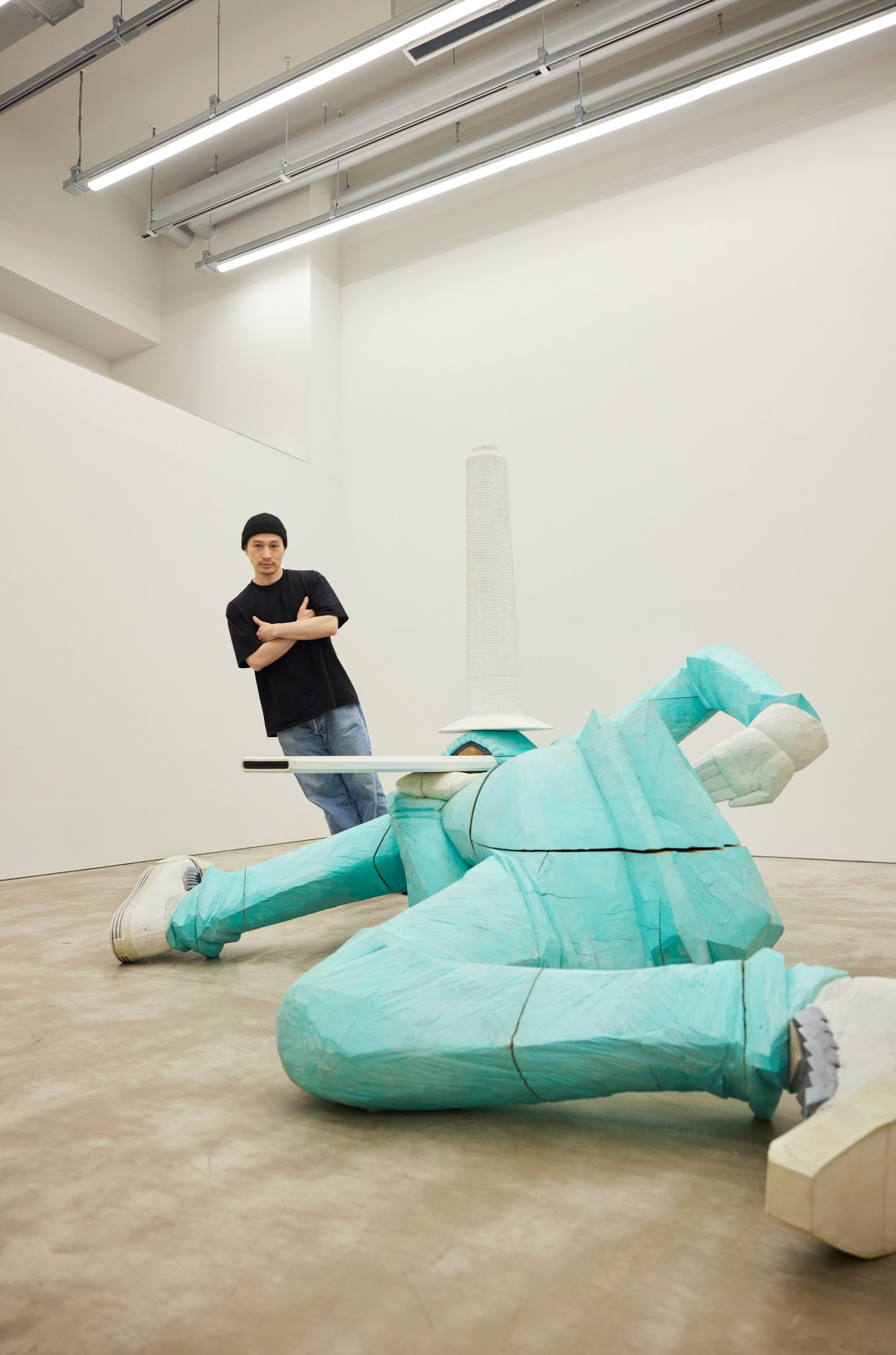
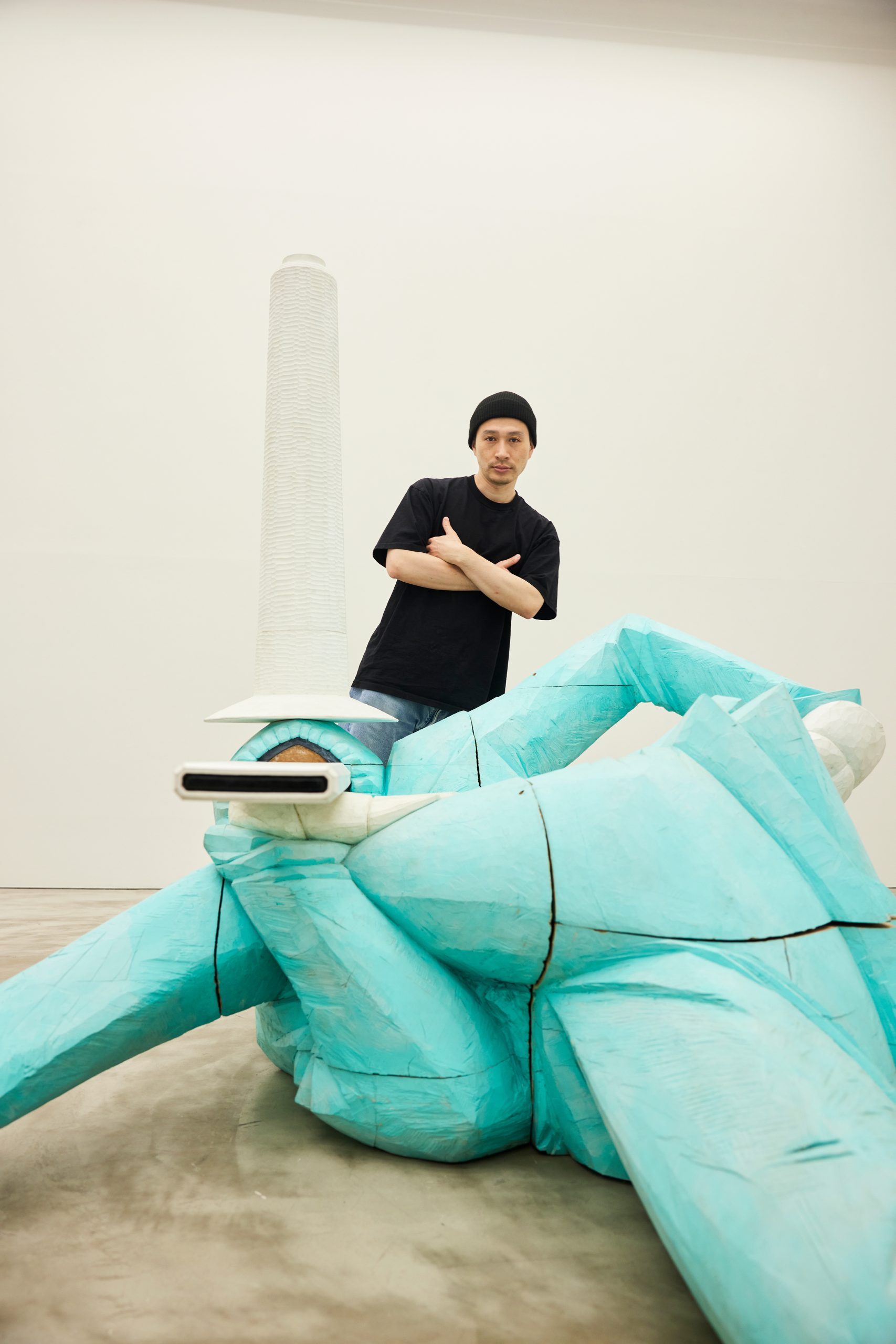
——ou yourself are a B BOY and therefore know how to move like one. When you create your structures, are you conscious of the direction of energy you learned through dance and the relation of the body to gravity?
Obata: There are certain fanatical details that are included in this piece that could only be understood by someone who knows how to move like this. I can fine-tune sculptures, which was also something to consider. While creating the sculpture, I considered how the human body is built and if the person (the sculpture) would look like a human if it stood up. So even though the neck is straight and contorted in the sculpture, the body, structurally, is anatomically correct.
The sculpture’s clothes, like its hat and glasses, and the wrinkles on its shirt are also warped. My sculpture is made up of two parts: one part that is warped like the aforementioned elements, and the other part that is crafted so that the structure of the human body isn’t compromised. Anything would be game if I didn’t think about the actual structure of a body.
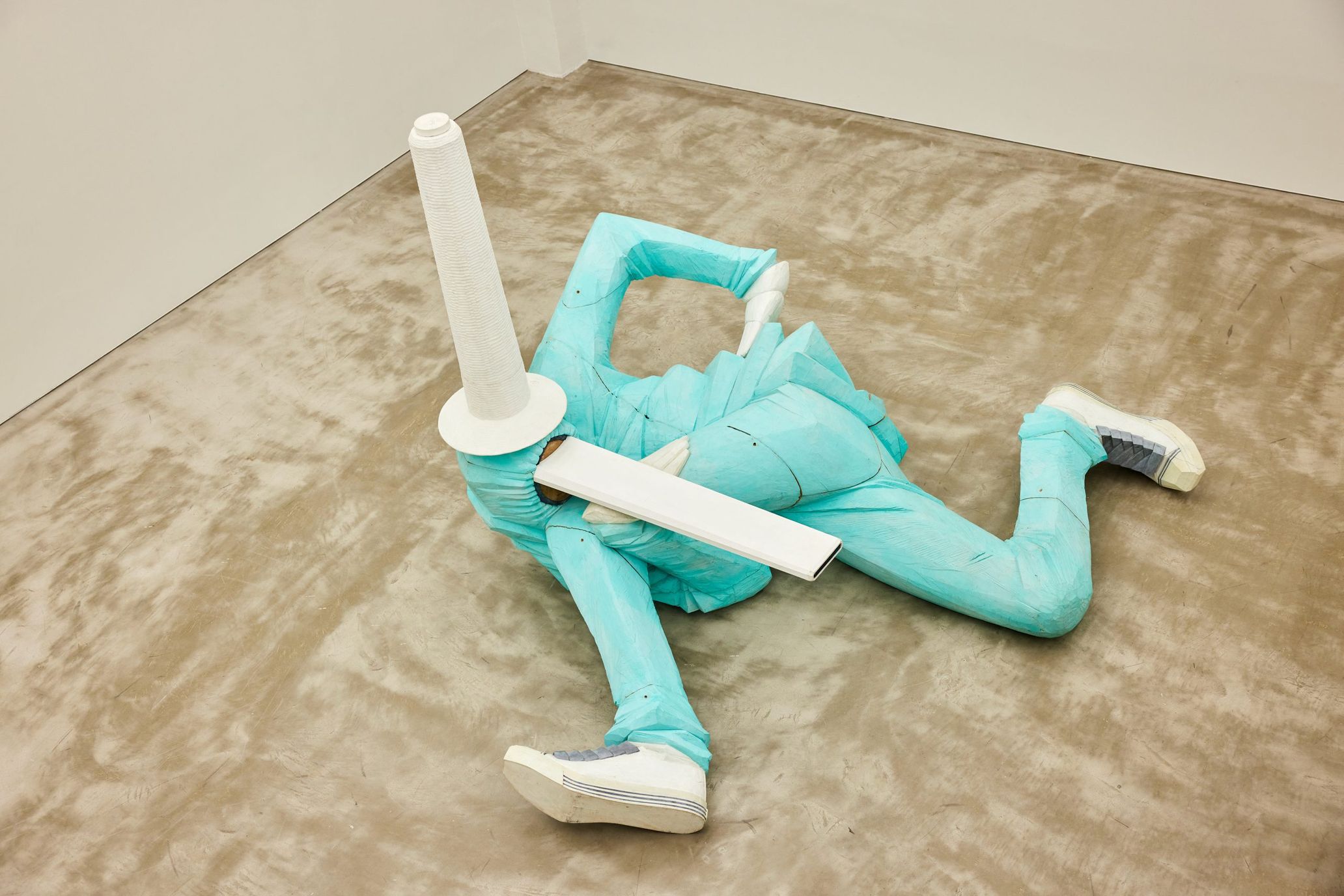
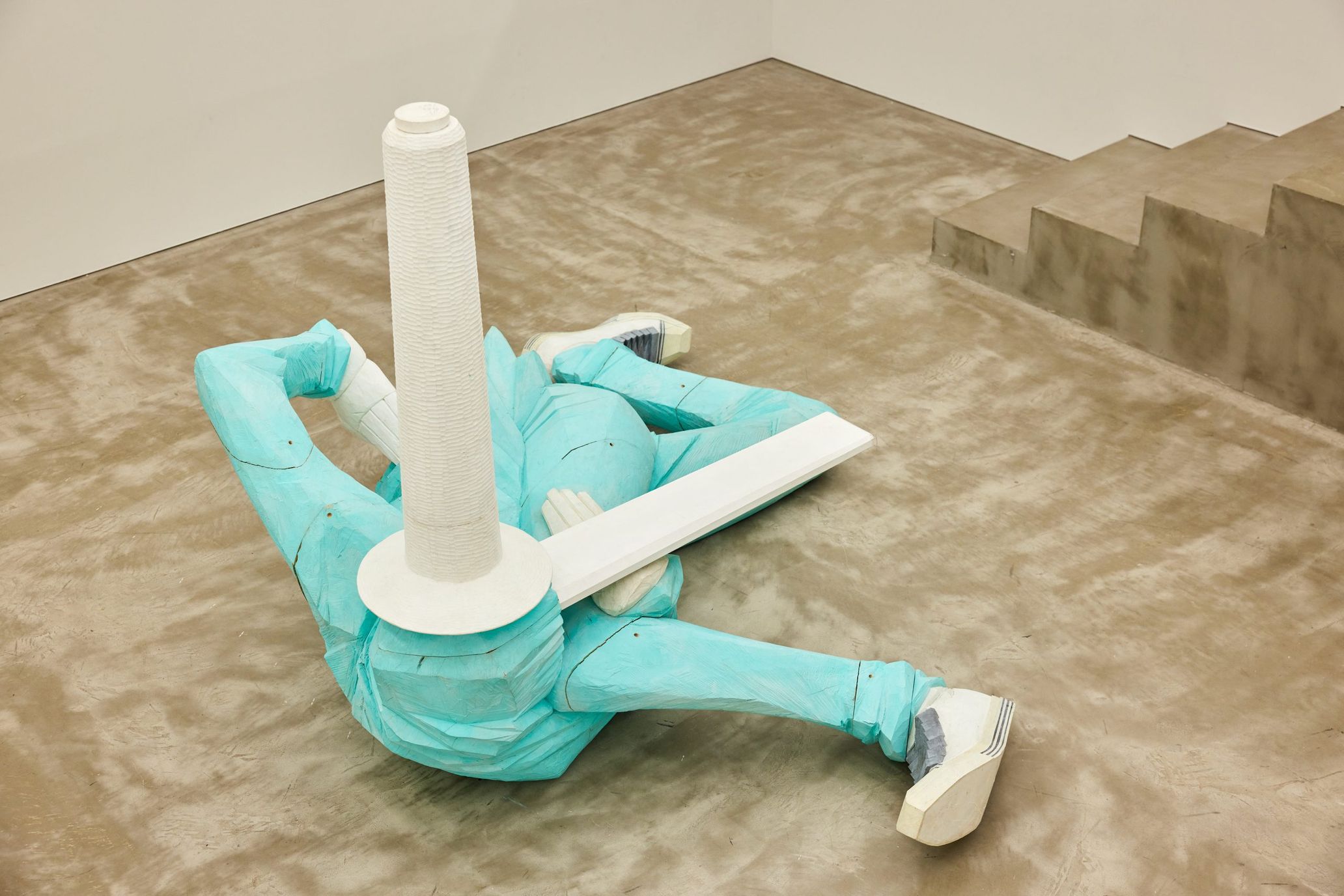
B BOYS are particular about the sneakers that they wear
——And the sneakers the sculpture is wearing are Pro-Keds.
Obata: Pro-Keds are B BOYS’ signature sneakers. I think we used to wear (Converse) Allstars back in the 1980s because they were cheap. But the signature B BOY look is the fat shoelaces. In my other works, they’re wearing Allstars, but this one is wearing Pro-Keds Uptowners, a rare model with three lines on the bottom.
When I was at the B BOY store Dancer’s Collective in Harajuku, DJ Mar told me that all of the dancers in Beat Street wear Pumas because Puma sponsored them. But in the battle scene in the train station with the boombox, they accidentally shot scenes of someone walking around wearing Pro-Keds (laughs). DJ Mar told me that those were Uptowners, and that stuck with me.
——You’re also passionate about what your sculptures wear.
Obata: Sneakers are super important to me, and I want there to be a reason why my sculptures wear what they wear. The motif of the hat is based on Kangol, worn like it used to be worn, sitting on the head, and is extended vertically upward. The glasses are based on the ones that Afrika Bambaataa wore and extended horizontally, which is very sculptural.
The lengths of the glasses, hat, and legs are horizontal or vertical to one another, which results in an original piece. It takes about six months to finish something this large. It’s a lot of work, so I try to pack in as many elements as possible.
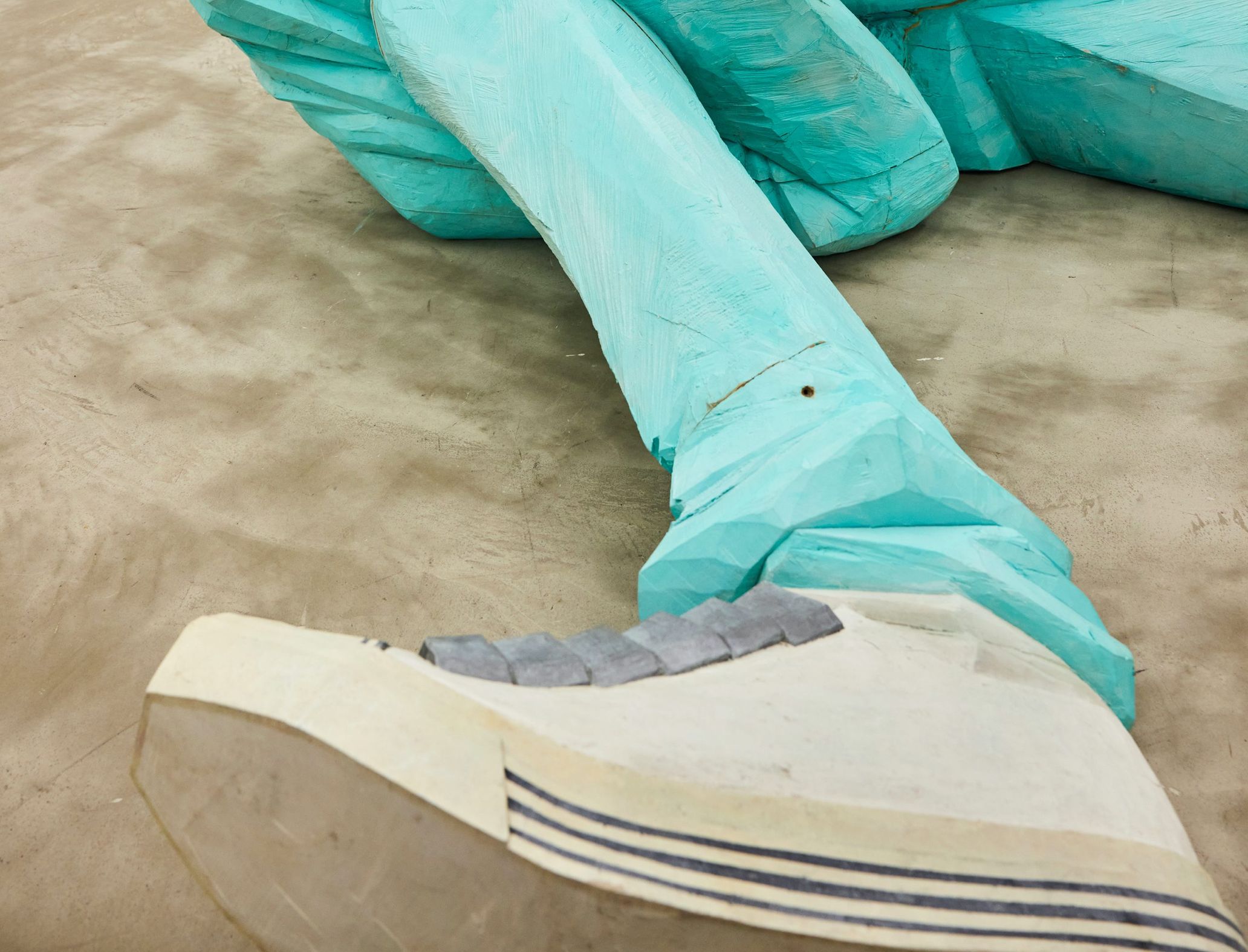
——It’s been a while since your exhibition in Yamanashi. Has the piece changed at all since?
Obata: You can see the holes and the seams between the parts, but that’s on purpose. Usually, such parts are not shown. There are thirteen parts in total. Before, we would assemble them, temporarily fasten them with screws, fill them with putty, dry them, re-carve them, color them, and then exhibit them. I had been using this method, which conceals the seams and makes it look like one piece, and exhibited in Singapore, Yamanashi, and New York using this method. However, the wood material began to warp after ten years. I thought it wouldn’t be right to fix these changes, so I dared to show them instead.
This time around, I’ve placed the blueprints from the first time I made the sculpture along with the sculpture itself, to showcase them together. The blueprint was made in terracotta (pottery), and I decided on everything using the blueprint before making the actual sculpture. This sculpture was in a very difficult pose to make, which made it hard to understand no matter how many drawings I made. I used the terracotta as a base to make my bigger sculpture, which is why I wanted to exhibit the two together.
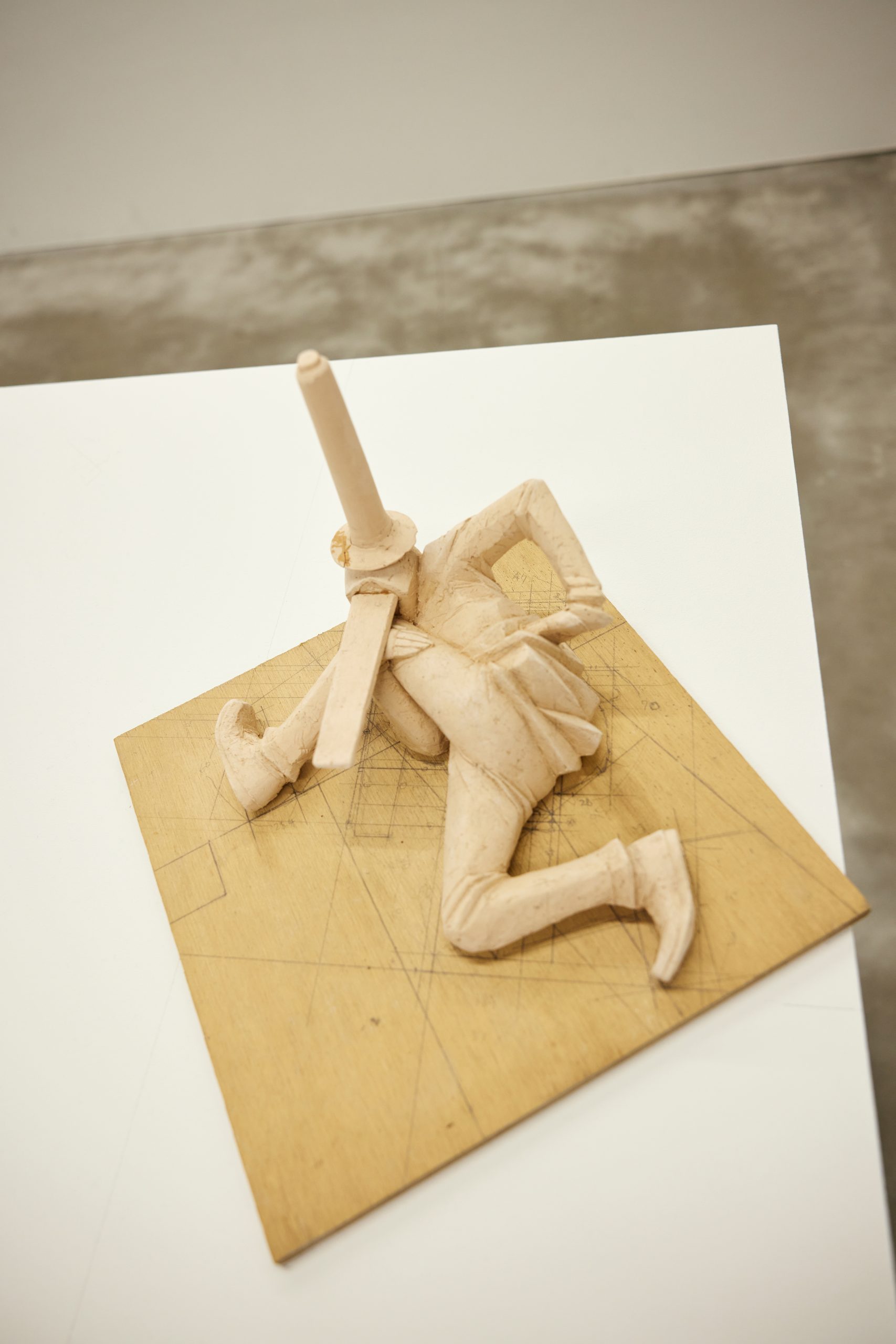

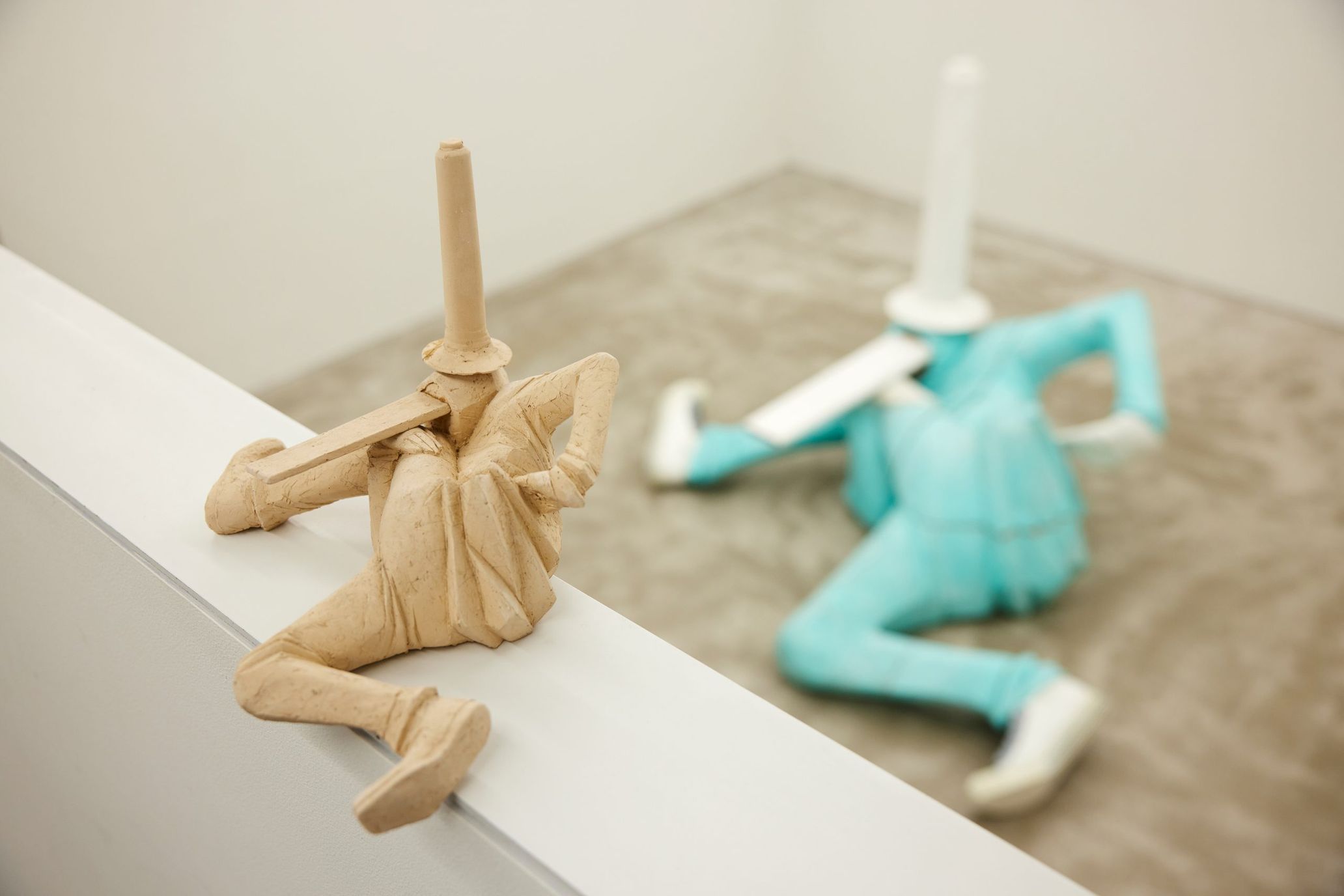
——You create your works while assessing the size of the exhibition space. You also consider how people will move within the space.
Obata: My previous exhibition (“LET’S MOVE IT,” in 2020) was filled with flat surfaces. I didn’t exhibit any sculptures or anything with a shape to it on purpose. My current exhibition, which is centered around one sculpture, is in contrast with my previous exhibition that was filled with flat surfaces. I wanted this contrast to accentuate the sculpture’s strength. My new work is only the one drawing done in acrylic paint, an homage to my past works. Because the canvas is transparent, if you lift it 5 cm from the wall, it creates shadows, which is only possible because of the material.
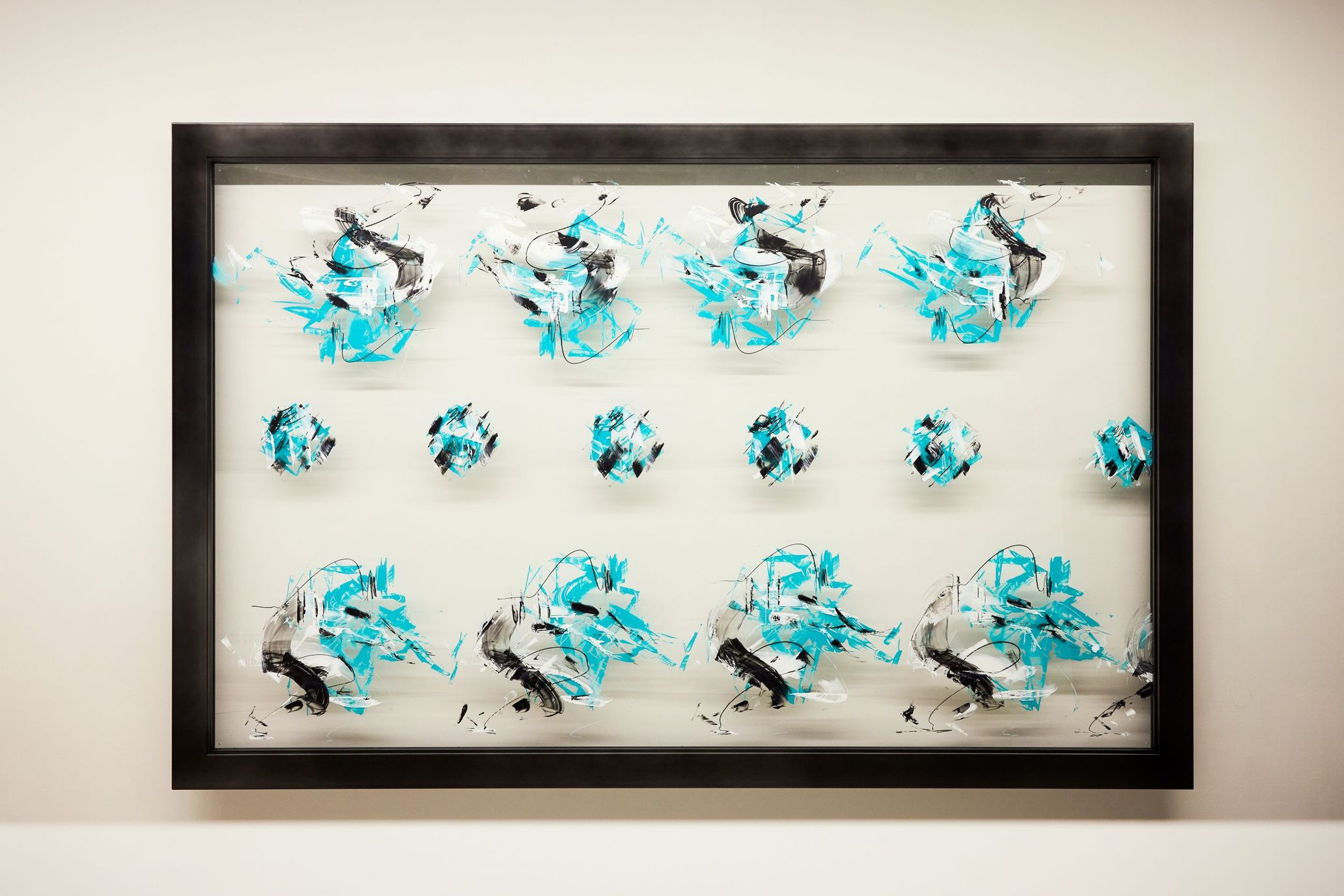
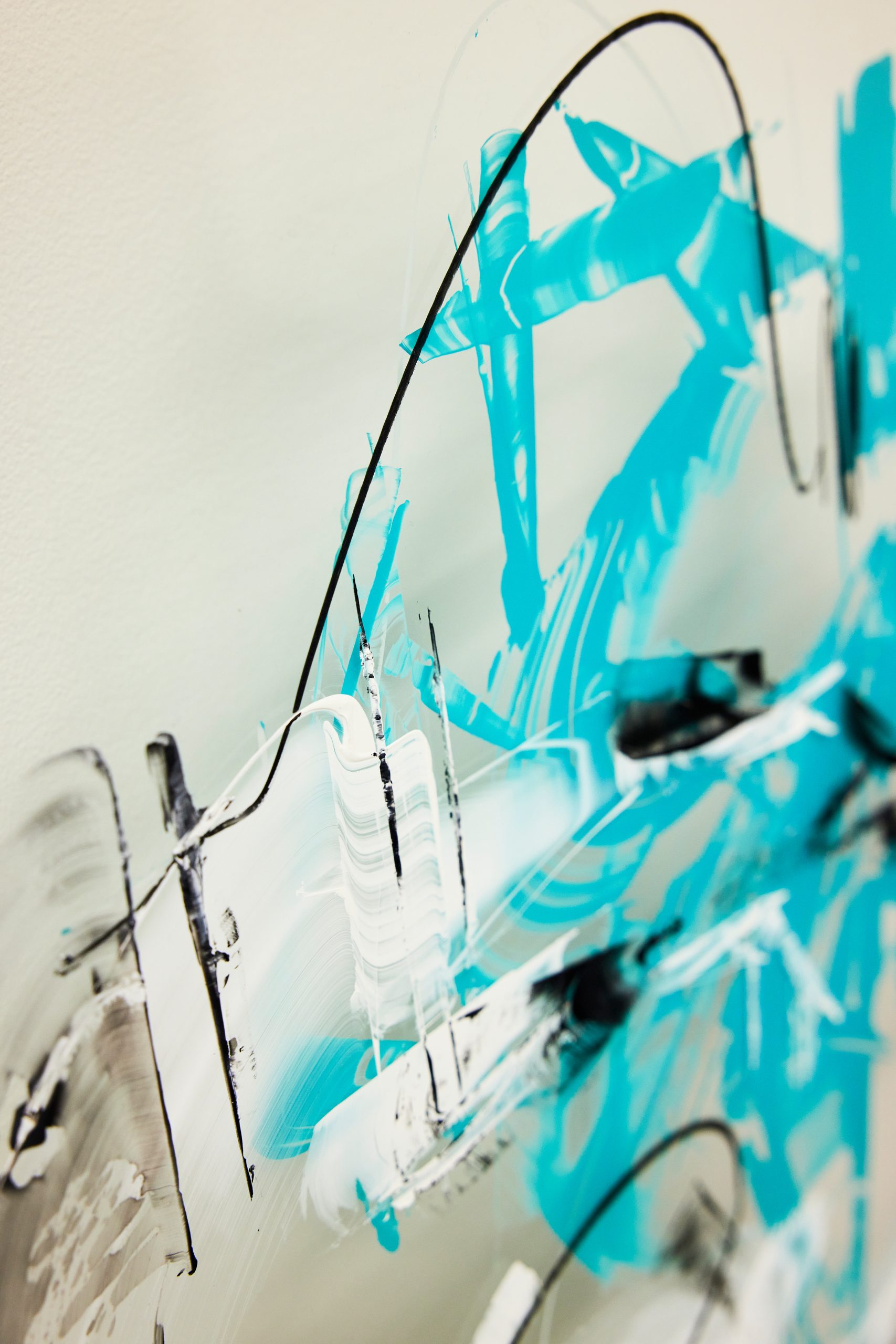
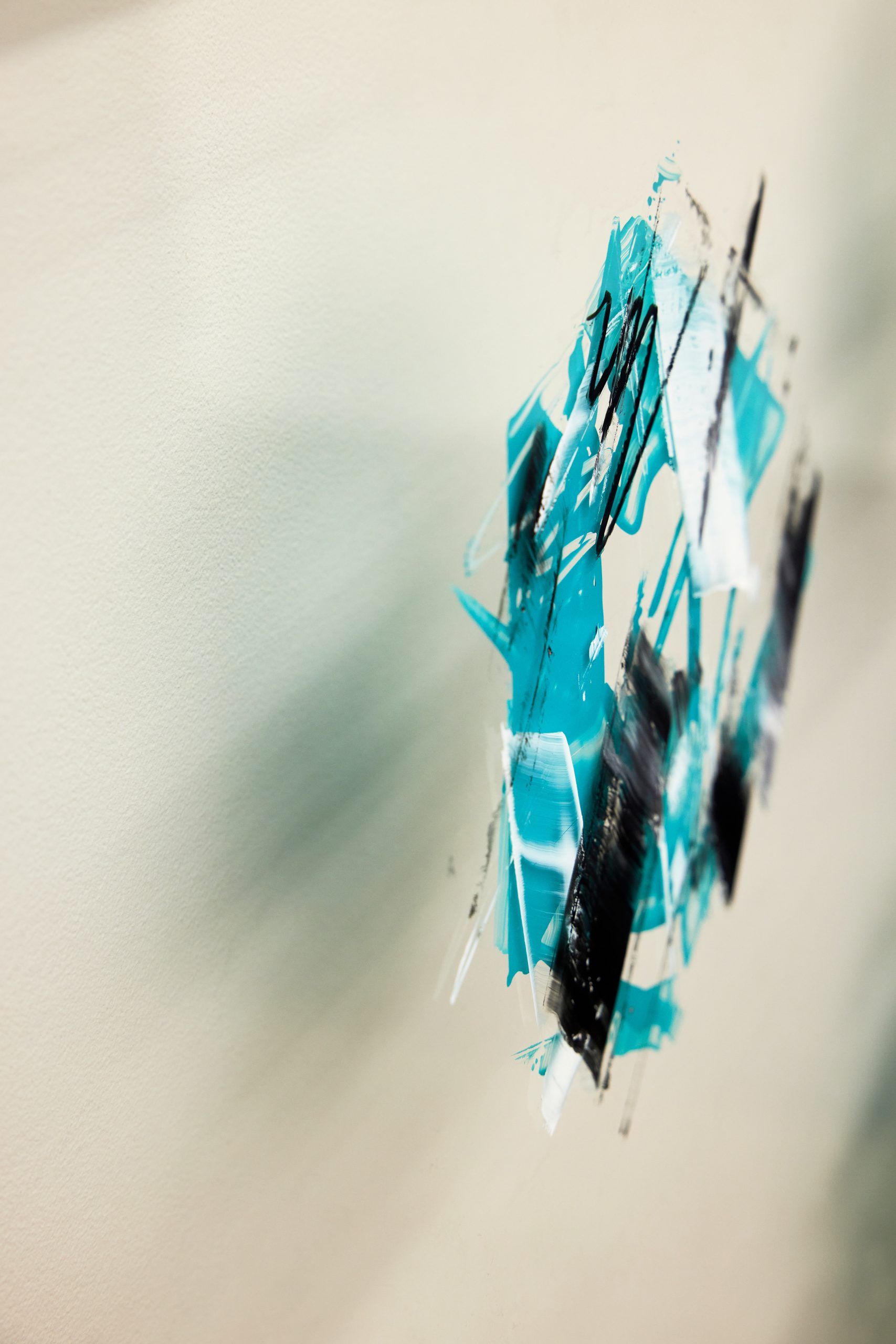
Human bodies, gravity…… ideas born from contrast
——You previously experimented with gravity. What made you consider that?
Obata: There are various contrasts, such as the contrasts of the human body and the contrasts of gravity. I call my work “B BOY sculpture,” but at the end of the day, it’s a figurative representation of the human body. I like the lines of the shoelaces in my sculptures, and wanted to extract that to place next to the sculpture as a strange object. Thus, the “object” piece was created as a contrast to the human body sculpture.
I thought it would be very interesting to have an inorganic object next to a sculpture of the human body, which is an organic object. Despite this contrast, both are placed against the ground because of gravity. As I toyed with this idea, I thought, “it’s not interesting if they have gravity in common.” Everything on this Earth exists alongside gravity, and sculptures can’t be made without thinking in terms of gravity. This sculpture is a human body controlled by gravity, so I thought the contrasting object must defy gravity.
——How do you forcefully defy gravity……?
Obata: When we think of something that is gravity-free, the first thing we have to consider is that we are now on Earth, which has a gravitational pull, which then makes it impossible to feel zero gravity. I didn’t like the idea of supporting an object with a stick to make it look like it’s floating; I wanted it to support itself. But I realized something as I was playing with some small objects that I had made. When an object is thrown upward, it goes up by human force. When the object is falling down, it does so because of the gravitational force of the Earth, meaning the force applied to each object is different. The apex of that is the moment when the gravitational pull of the Earth and human force are pushing against each other. Since that moment is only an instant, I thought I could capture the nearest thing to zero-gravity if I took a photograph. Then that photograph eventually became a drawing. The picture captures the human body that is conscious of the floor and objects that are floating. That’s what led to the drawings.
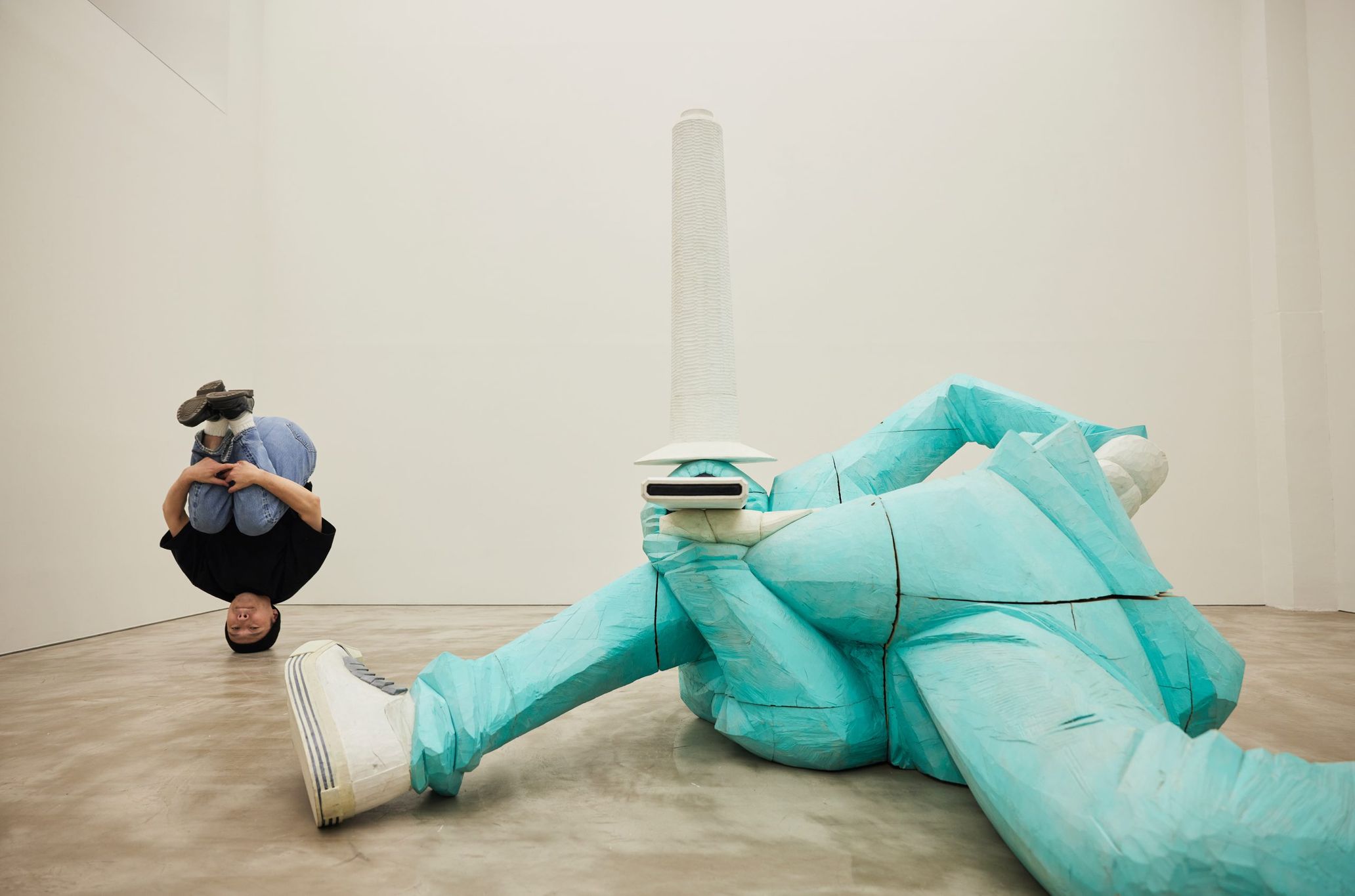
——So the theme of contrast is also connected to the dancing piece.
Obata: It is. And what’s most appealing about dance is the moment of weightlessness you feel in the presence of gravity. There’s a second where it seems gravity no longer exists, which is what’s intriguing. The windmill and moonwalk have similar qualities. Within dance, B BOY, ballet, and other styles have one thing in common: they all create one axis in the body. There is the Earth’s axis of gravity, but there’s another separate axis in dance.
For instance, for the moonwalk and the running man, your head is in a fixed position while the rest of your body moves, which is something that’s only possible if you have a stable axis. What’s fascinating is that the type of axis is different depending on the dance style, but you have to create an axis nonetheless. I don’t think I would’ve been thinking this deeply if I weren’t a dancer as well as a sculptor. I also wouldn’t have dug deeply into why breakdancers lock their feet at a right angle. It’s interesting that being a sculptor made me look at dance from different perspectives.
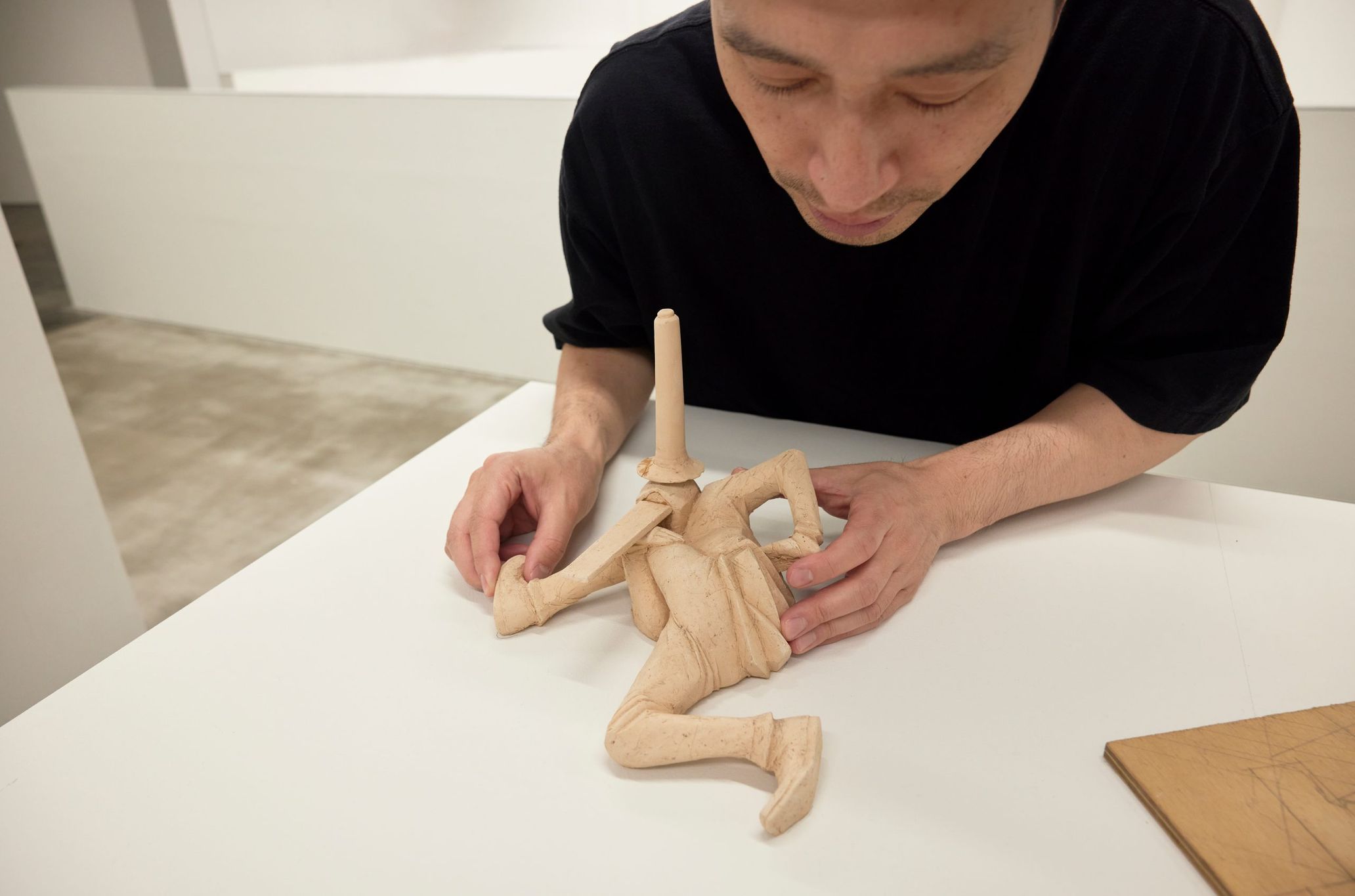
Taku Obata is a B BOY that likes to top rock
——What attracted you to breakdancing?
Obata: Since I was in elementary school, I watched TV shows like “Dance Koshien” and ZOO. The dance craze made me want to do it. But no one around me was dancing, so I played basketball instead. In the midst of that, my older brother suddenly took up breakdancing, which led me to start in my junior year of high school. At first, I didn’t even know the difference between top rock and breakdancing. Time went by, and I met DIGITAL JUNKEEZ’s JOMMY (now brand communicator for Diesel and a DJ) when I was 19.
I was taking a gap year at the time. JOMMY was working at the Diesel store in Tachikawa, and my B BOY senpai from the Miracles, Mr. Tsuma, introduced us. He had dreadlocks back then, and his vibe wasn’t to my liking. But when I watched a video of the DIGITAL JUNKEEZ dancing, they were so cool. I realized I liked top rock while I was watching that video (laughs).
——Your drawings do have a new jack-type of movement to them.
Obata: Exactly. A bit like the running man.
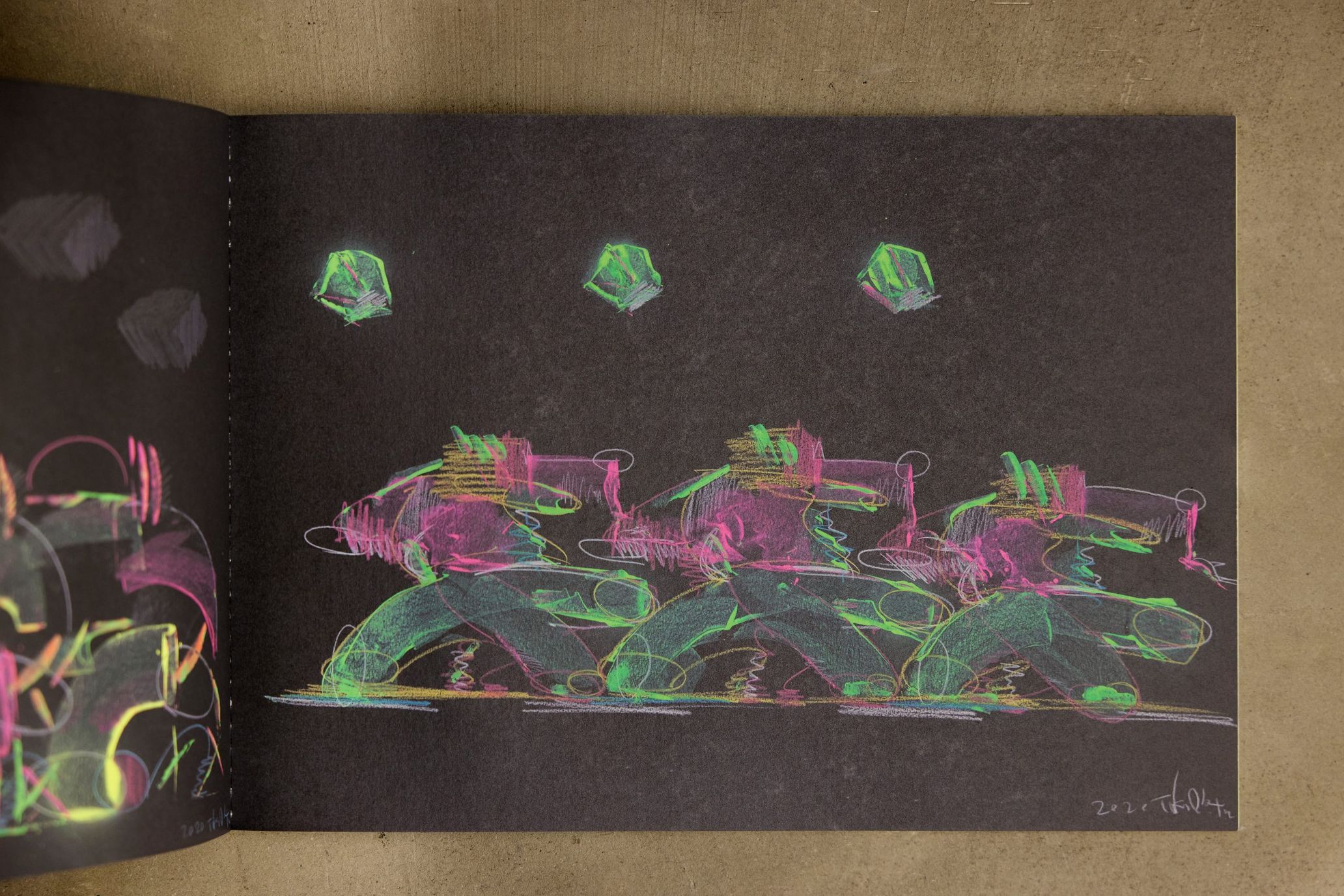

——I thought that move was uprock at first.
Obata: You’re pretty perceptive (laughs). From a top rock perspective, this looks like the running man, but looks like uprock from a B BOY’s perspective. I like both, so it is both, which is what I was aiming for. That’s why it’s wearing sarrouel pants and has a flat top hairstyle. I only capture elements that I really like.
——Breakdancing and top rock are also in contrast.
Obata: Yes. In some sculptures, the upper body is top rock, and the lower body is B BOY. But I think that’s something that only dancers would understand (laughs). I’m most influenced by CRAZY-A and CHINO, and the generation of dancers who can do top rock as well as breakdance. The difference between the two is that B BOY is battle oriented and requires a lot of practice, while top rock is party dancing, something that’s fun when danced together. Those contrasts are also amusing. The fashion between the two styles is different, too. I incorporate new jack and B BOY in my style, which perhaps is why I create B BOYs who like top rock.
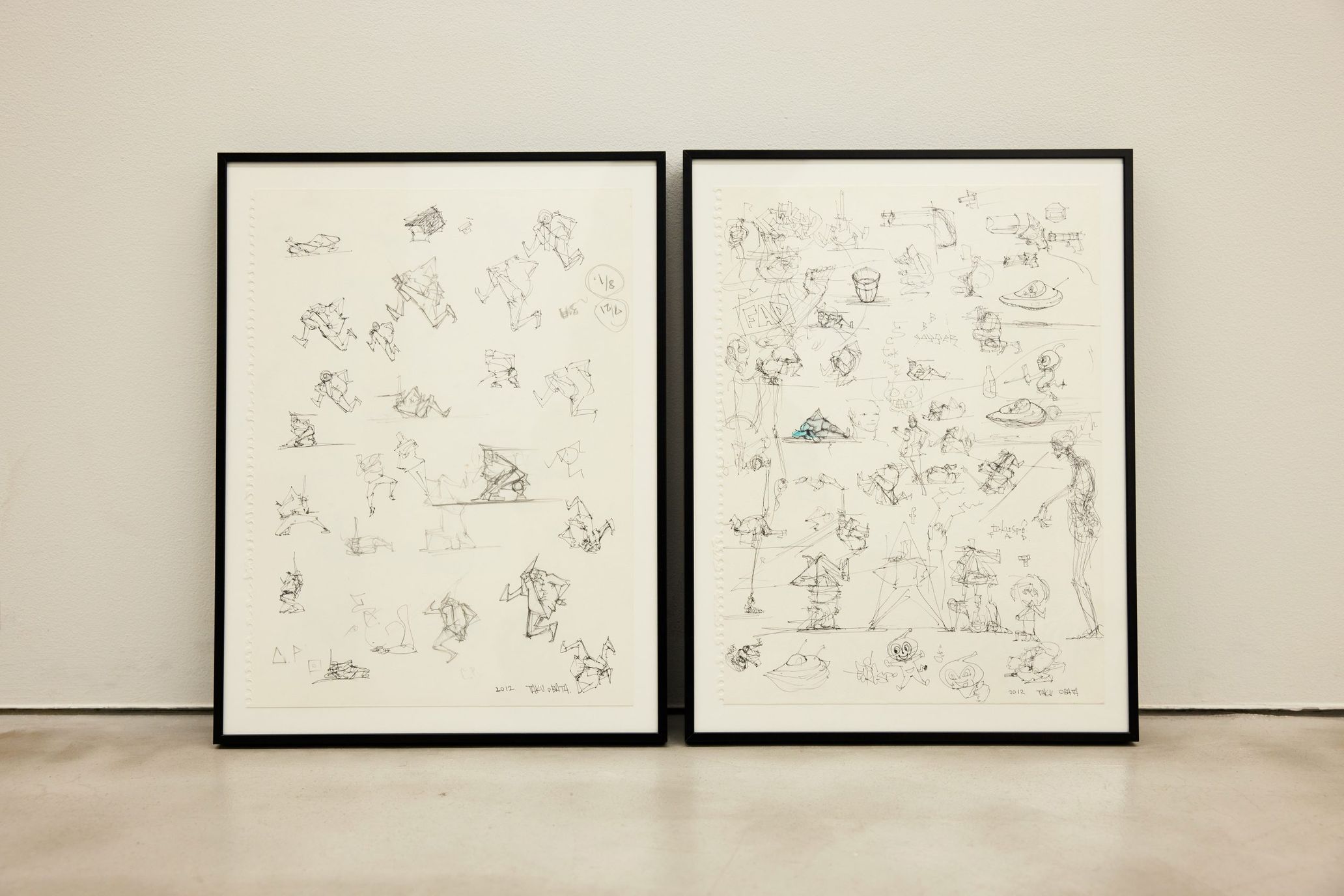
■“Temporas/テンプラ”
DATES: Wednesday 21th September – Saturday 29th October 2022
LOCATION:Sokyo Lisbon Gallery
ADDRESS:Rua de São Bento, 440
1250-221 Lisbon Portugal
https://sokyolisbon.com/
Photography Yuri Hasegawa
Translation Mimiko Goldstein

